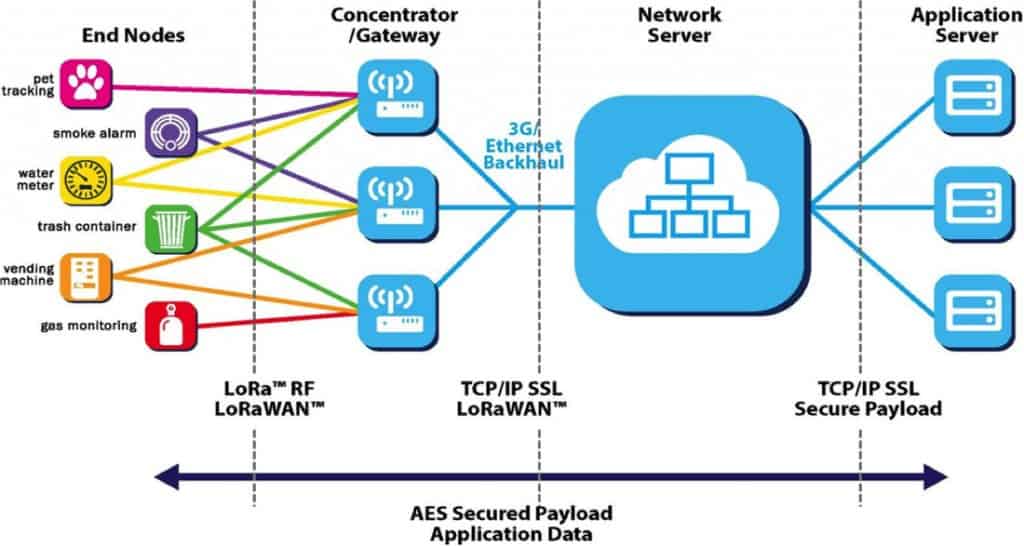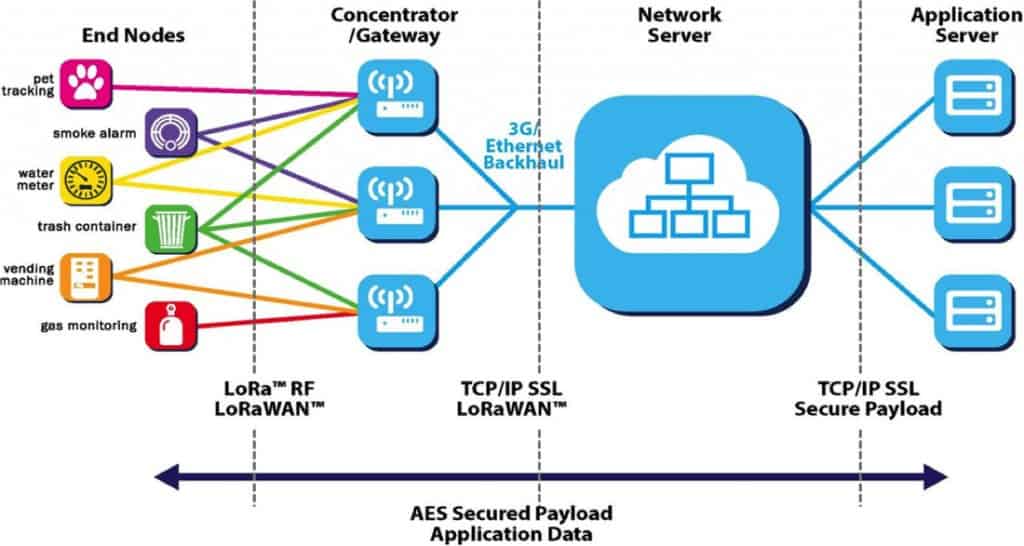Your shopping cart is empty!

LoRa in Malaysia? Probably in Indonesia too?
Updated on 16th November 2021.
If you follow our activities (Cytron’s activities), you might have noticed that we use LoRa (Long Range) ecosystems quite a lot. It started with the Microchip seminar back in 2015 where they announced LoRa. I was amazed by its coverage distance and open standards. LoRa is fairly new in wireless technology, it emerged to bridge the gap in LPWAN (Low Power Wide Area Network). Although we already have PAN (Personal Area Network) such as WiFi and BLE, but WiFi is power hungry with only a 100-meter range whereas BLE is low power but still operates within 100 meters range. How about 2G, 3G, 4G, LTE, and all those cellular networks that we use for our smartphones, can’t they cater to Wide Area Network (WAN)? Yes, they can, but there are 2 major concerns:
- Currently, the cellular network is NOT low-powered. Just look at your phone, the battery can only last for 1 or 2 days; maybe up to a week in sleep mode, and a maximum of 1 month without charging. But we are looking for years of sensor nodes powered by battery or even solar power ONLY.
- Cellular networks have to be licensed by the local authorities. Furthermore, only big Telco companies can afford the infrastructure (the base station, huge antenna, licensing, network, deployment, etc). Private companies and individuals cannot afford it. If a particular area is not covered by a cellular network, you cannot use it, nor can you deploy your own without the infrastructure and license.
This is where LoRa comes into the picture. It is an open standard protocol that uses an unlicensed frequency band (at least in Malaysia and most countries). Better yet, it runs on very low power too. To know more about LoRa technology, please check out LoRa Alliance. Anyhow, from my view the important features of LoRa are:
- It's fairly new wireless technology that is meant for LPWAN.
- The device (sensor node) can be powered with consumer batteries and are able to last for years depending on the application, ranging from 1 to 2 years in most cases, and up to 10 years in some special cases.
- LoRa (Long Range) is the radio protocol, while LoRaWAN is the network protocol.
- It is a star topology network, broadcasting.
- It uses sub-GHz frequency (below 1 GHz) to communicate, which is regulated by each country’s regulatory body. For Malaysia, it is
919MHz to 923MHz920MHz to 923MHz, also known as AS923-S1(updated on 16th Nov 2021). - Individuals can deploy their own LoRaWAN as they like if they use it within the regulated power and frequency.
Now, you might have noticed too, we already carried several LoRa shields:
- Cytron LoRa shield– uses Microchip’s RN2903 LoRaWAN module (discontinued), loaded with Malaysia LoRaWAN frequency settings.
- Cytron LoRa RFM Shield– Uses HopeRF RFM95W (LoRa radio design for 915MHz band).
- Atilze LoRa Shield (discontinued)– Uses Gemtek GL6509 LoRaWAN module, loaded with Malaysia LoRaWAN frequency settings. And comes with 6 months free subscription to access Fabrick (Application server platform from Atilze).
If you have tried LoRa, you will notice, it has 3 important elements:
- The LoRaWAN node – This is the sensor node, or in our case, a LoRa shield connected to an Arduino. The Arduino grabs information from the sensors and packages the data into LoRaWAN format before the LoRa shield sends it to the network.
- The LoRa gateway – It is an RF concentrator, able to receive LoRa radio packets in several frequencies simultaneously. Normally they come with 8 concentrator channels. Other variants range from single-channel gateways (can only receive 1 channel of LoRa radio packet at one time), to pricier 16 channels concentrators. Anyway, there are quite a few LoRa gateways in the market! The gateway basically receives and forwards the LoRa packet to a LoRaWAN network server.
- The LoRaWAN network server – Most beginners do not notice its importance but a LoRaWAN network server is needed to decode LoRaWAN data packets and consolidate data packets from several gateways as the nature of LoRa RF is broadcast, so all gateways within range will receive the same packets. Not to forget the network server also handle the security of the network. Decoded data is then sent to the application server for display, data analysis, and other purposes.
Perhaps this diagram can illustrate the LoRaWAN architecture better.

Cytron has been trying to enable everyone to deploy LoRa, yet our resources are limited because it is not our expertise – we are not network or server developers. But as you can see, network servers are crucial in LoRaWAN architecture so we have been talking to many parties such as TTN, Orbiwise, Loriot, LinkLabs, etc, to get things up and running for Malaysia. Due to technical issues, most of these LoRaWAN network servers do not support Malaysia LoRaWAN frequencies. Of course, makers and developers can still find workarounds but they are still not preferable as they require firmware updates at the node, gateway, or even both.
We solve this problem by using the Atilze LoRa shield. Atilze LoRa shield comes with free access to their platform, Fabrick, which consists of a LoRaWAN network server and application server so anyone can register an account. We are coming out with a guide for users to register an account and start using LoRa technology, so stay tuned!
Arduino-compatible LoRaWAN shield
- Comes with Arduino UNO/CT-UNO example code.
- Free access to Fabrick platform for 6 months which consists of LoRaWAN network server and application server.
- Free access to 28 industry-grade outdoor gateways in the Klang Valley area. Here is a map of the coverage areas listed below. You will still have to try it out yourself as wireless coverage depends on many factors.
- Damansara Jaya
- Jalan Templer
- Taman Kinrara
- Kuchai Jaya
- Taman Teknologi Malaysia
- Puchong
- Puchong Prima
- Cyber View
- Cyber Jaya
- Bangi
- Kajang Town
- Tasik Semenyih
- Jalan Semarak
- Jalan Pudu
- Taman Cahaya Ampang
- Neo Damansara
- Seksyen 4 Kota Damansara
- SS7 Kelana Jaya
- SS15 Subang Jaya
- Seksyen 13 Shah Alam
- Sri Muda
- i-City
- Klang Sentral
- Teluk Gadong Klang
- Pandamaran
- Jalan Kebun
- Westport
- Pulau Indah
Here’s a Step by Step guide to Atlize for beginners.
LoRa will continue to scale with the growing number of LoRaWAN gateways, network servers, and application servers. As far as I know, Indonesia is finalizing the LoRa frequency and it will most likely be between 919MHz and 923MHz too. Atilze does have gateway installations in Indonesia, you can contact them for more info.
Here is the link to Atilze LoRa Shield. We would really like to see what you created with LoRa, share it with us on our Facebook page: https://www.facebook.com/cytrontech/
If you have any comments or questions about this shield, you are welcome to discuss it in our technical forum: https://forum.cytron.io.
Now, everyone can “LoRa”
 International
International Singapore
Singapore Malaysia
Malaysia Thailand
Thailand Vietnam
Vietnam